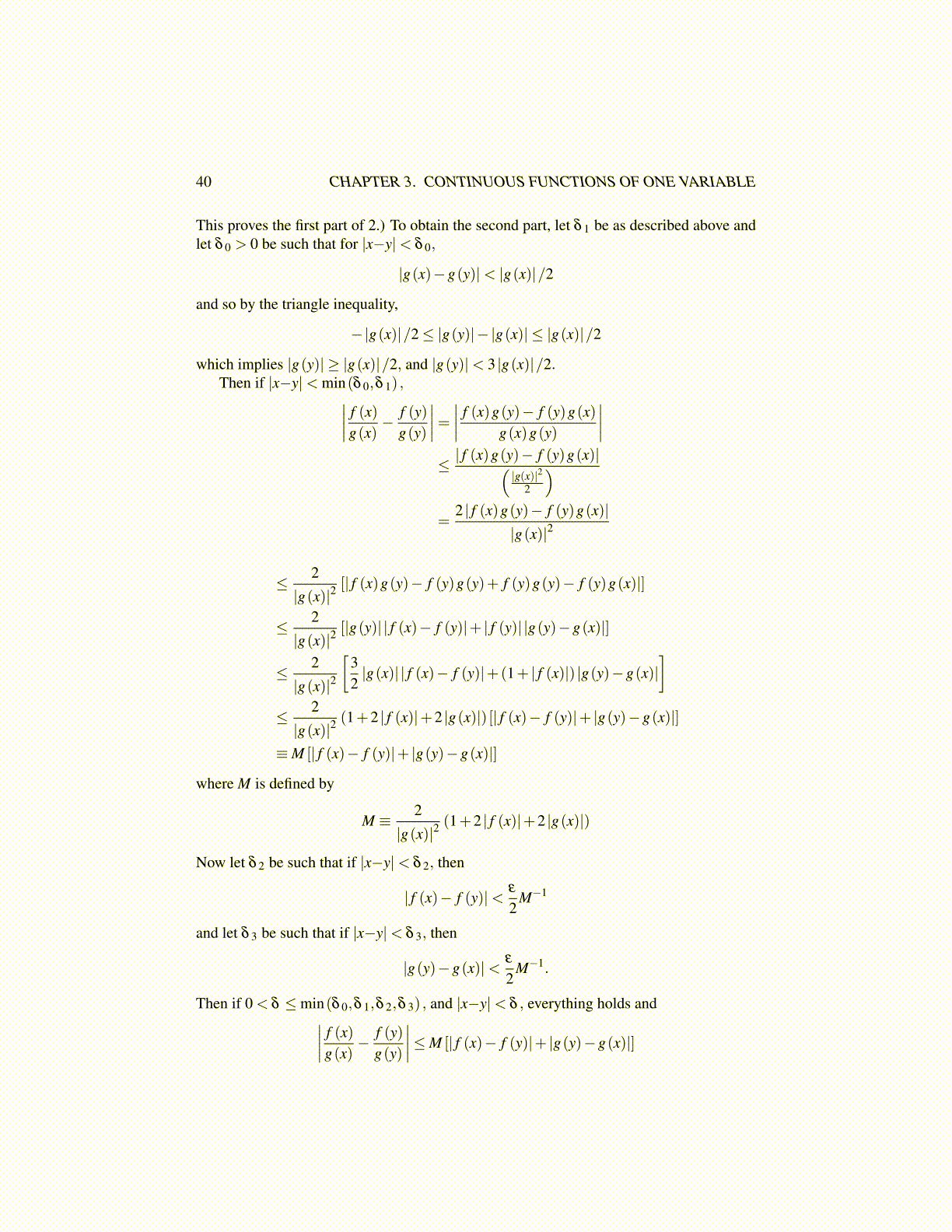
40 CHAPTER 3. CONTINUOUS FUNCTIONS OF ONE VARIABLE
This proves the first part of 2.) To obtain the second part, let δ 1 be as described above andlet δ 0 > 0 be such that for |x−y|< δ 0,
|g(x)−g(y)|< |g(x)|/2
and so by the triangle inequality,
−|g(x)|/2≤ |g(y)|− |g(x)| ≤ |g(x)|/2
which implies |g(y)| ≥ |g(x)|/2, and |g(y)|< 3 |g(x)|/2.Then if |x−y|< min(δ 0,δ 1) ,∣∣∣∣ f (x)
g(x)− f (y)
g(y)
∣∣∣∣= ∣∣∣∣ f (x)g(y)− f (y)g(x)g(x)g(y)
∣∣∣∣≤ | f (x)g(y)− f (y)g(x)|(
|g(x)|22
)=
2 | f (x)g(y)− f (y)g(x)||g(x)|2
≤ 2
|g(x)|2[| f (x)g(y)− f (y)g(y)+ f (y)g(y)− f (y)g(x)|]
≤ 2
|g(x)|2[|g(y)| | f (x)− f (y)|+ | f (y)| |g(y)−g(x)|]
≤ 2
|g(x)|2
[32|g(x)| | f (x)− f (y)|+(1+ | f (x)|) |g(y)−g(x)|
]≤ 2
|g(x)|2(1+2 | f (x)|+2 |g(x)|) [| f (x)− f (y)|+ |g(y)−g(x)|]
≡M [| f (x)− f (y)|+ |g(y)−g(x)|]
where M is defined by
M ≡ 2
|g(x)|2(1+2 | f (x)|+2 |g(x)|)
Now let δ 2 be such that if |x−y|< δ 2, then
| f (x)− f (y)|< ε
2M−1
and let δ 3 be such that if |x−y|< δ 3, then
|g(y)−g(x)|< ε
2M−1.
Then if 0 < δ ≤min(δ 0,δ 1,δ 2,δ 3) , and |x−y|< δ , everything holds and∣∣∣∣ f (x)g(x)
− f (y)g(y)
∣∣∣∣≤M [| f (x)− f (y)|+ |g(y)−g(x)|]